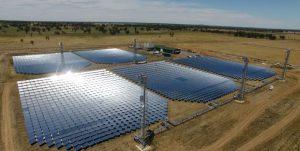The Australian Energy Market Commission (AEMC) recently released a draft rule change proposal that will require networks to improve the electricity grid to increase uptake of energy exports like solar and enable fairer pricing.
The subsequent public debate has included misconceptions and some false accusations.
ACOSS believes this package of reforms will go a long way to modernising the electricity rules and the electricity grid to help support a rapid and fair transition to a cleaner, more affordable and dependable energy for all.
As one of the rule change proponents, it’s important we provide some clarifying comments, and address a number of misconceptions up front.
This draft rule gives more choice to solar owners
Solar owners will not be forced to pay every time they export to the grid.
The intention is to give solar owners more options as to how they manage solar exports. Solar owners could choose things like free exports up to a limit or paid premium services that guarantee export during busy times.
The reforms will address the export limits being imposed on more and more solar owners who are losing income, and will for the first time require networks to provide a guaranteed level of reliability for exports.
Networks will also be expected to reward consumers when their exported energy benefits the grid and other consumers.
The evidence shows there are bottlenecks in the electricity grid due to energy exports
New distributed energy resources like rooftop solar, batteries and electric vehicles that export energy to the grid can accelerate transition to clean energy and make energy more affordable for everyone, but the old electricity grid was not built for two-way flow of energy.
A recent opinion piece in RenewEconomy questioned the existence of network capacity constraints, concluding there is no need for reforms to require networks to better plan for increasing export capacity.
This is despite well documented evidence from the Australian Energy Market Operator (AEMO), the Australian Energy Regulator (AER), and network operators of the existing and growing problem.
As households export more and more energy, it is adding to existing over-voltage issues and creating thermal overloading of electricity substations, which means the old networks are reaching technical capacity limits.
Most networks have been dealing with this growing problem by imposing limits on exports, which slows decarbonisation of the grid and reduces the income stream for solar owners.
At the moment, every network imposes export limits on residential solar — most often 5 kW or 3 kW – but thousands of customers are being prevented from exporting any energy at all.
AEMO modelling predicts that with a fast uptake of solar, a quarter of all network substations across Australia would experience reverse power flows by 2025.
With the amount of solar energy going into the grid projected to at least double and perhaps quadruple over the next decade, without reforms to require networks to invest and improve export capacity, more consumers will be export limited or subject to zero exports, with new owners facing greater limits.
Owners of solar and batteries will lose income stream from exports and there will be a reduction in the amount of zero emissions energy supplied to the grid.
3) The rule change involves a comprehensive reform package
Much of the commentary to this rule change has focused on charging solar exports, when this is only one part of a comprehensive reform package that, combined, should help accelerate cleaner, more affordable and dependable energy.
The reforms will officially recognise energy export as a service to consumers and will require Networks to plan for and provide incentives to more efficiently invest in, operate and use export services.
It will introduce a reliability standard for exports, where Networks will be required to guarantee a certain level of grid availability for exports, and would be penalised when the standard is not met.
It will enable distribution networks to offer two-way pricing for export services, allowing them options to reward owners of distributed energy resources for sending power to the grid when it is needed and charging them for sending power when it is busy.
And, it will allow flexible pricing solutions at the network level. This will enable Networks to price options to suit the capability of the network, customer preferences and government policies, in consultation with consumers.
4) Transition to zero carbon energy must be just and fair
ACOSS supports the rapid decarbonisation of the energy system, underpinned by the principle that the transition must be just and fair.
This principle means costs should be spread equitably within the community and should avoid disproportionate impacts on vulnerable people and low income households.
These principles are for example supported by a range of business, environment, union, investor, energy and social organisations.
5) Distributing energy costs and benefits fairly
How costs are recovered through energy bills matters! Particularly for the approximate 3 million people on low incomes, who don’t own solar, and who spend disproportionately and significantly more of their incomes on energy bills.
Low income households either deprive themselves of energy by going without heating/cooling, hot water, or forgo cooking, or they go without other essentials like meals, medicines, and school excursions to pay for energy bills.
Any way to reduce energy bills goes a long way for a person on low-income or experiencing disadvantage.
One opinion piece asks for proof that rooftop solar is being subsidised by non solar households.
You just have to look at the Small Scale Renewable Energy Scheme (SRES) which reduces the costs to purchase a solar PV system and recovers the cost through everyone’s electricity Bill.
ACOSS argues the cost of the SRES should come off energy bills and be paid for through government budgets.
But that’s another matter. The issue here, is what’s the fairest way to pay for the additional investment required by networks to enable more energy exports to the grid.
Network costs make up two-fifths of the electricity bill (more in some network areas) and at present are recovered only via consumption tariffs through a combination of fixed and usage charge.
Households able to substantially reduce their usage, like solar owners, contribute less to network costs, which leads to other households paying a greater share of all network costs (under non-cost reflective tariffs and network revenue caps).
People on low-incomes either cannot afford or if they rent can’t access measures like solar to reduce usage, other than depriving themselves of energy which often leads to significant health and wellbeing impacts.
While this rule change does not address the consumption charging issue, which more cost reflective tariff reform could go some way to address, it demonstrates the impact of loading more network costs onto consumption charges.
Households that export energy are not charged for the service and financial benefits they receive of exporting energy to the grid. They do pay a one off DER connection charges, which is a blunt instrument that cannot respond to changing conditions over time.
We think it’s fairest if households that financially benefit from greater network investment that will enable them to access export services and sell more of their energy to the grid (rather than just self-consume), contribute to the cost.
We also think it’s fair for households to be paid when their exports provide benefits to the grid.
6) As more energy is exported to the grid, and congestion increases, private benefits will outweigh social benefits.
This opinion piece in RenewEconomy argues the social benefits of energy export resulting from downward pressure on wholesale energy prices, will always outweigh costs to invest to increase export capacity, and therefore everyone should contribute to costs incurred by networks to increase energy export capacity.
However, the analysis often cited to make this assertion was backward looking and not forward looking, where we no significantly more energy exports will enter the grid, and therefore can’t be used to draw conclusions about future costs and benefits.
Further, Networks have indicated the costs to date of adding solar PV have been relatively low as they ‘use up’ the intrinsic hosting capacity of the network.
However, as outlined above, as solar uptake significantly increases so will the capacity constraints and the costs to networks to resolve the constraints and enable greater energy exports.
What we can expect to see under this rule change, is where solar exports benefit everyone, any costs associated with increasing energy export capacity approved by the Australian Energy Regulator (AER) can be paid for by everyone (this is the “net market benefit” test which already applies to network investment).
Where additional investment is required and it does not pass this test, the cost to enable greater energy export will be able to be recovered from those who benefit from being able to sell their excess energy to the grid.
7) The pricing reforms will reduce bills for the 80% of non solar households
AEMC modelling finds that enabling export pricing options will reduce the Bills of non-solar consumers, including people on low income because they would no longer be paying for energy export services they aren’t using.
It also finds the 20% of solar owners (including those on low incomes) will still save hundreds of dollars on their energy bills depending on the size of the system and solar export options they chose.
For example, a household with 4-6kw would still save an average $900 a year, more if they took up options that rewarded them for using the system differently.
8) Solar is most prevalent amongst high wealth households, more needs to be done to support low wealth households access solar, batteries and other new technologies household
While there are an increasing number of people on lower incomes, mainly aged pensioners who own their own home and are able to access supports to invest in solar PV, ABS data shows solar ownership is highest amongst higher wealth households,
More needs to be done to support people on low income access energy saving technologies like solar PV and batteries.
ACOSS, TEC and a 40 plus coalition are advocating for policies to invest in rooftop solar for low income homes, including people in public and private rentals, knowing they will still be significantly financially better off under these reforms.
And for the millions who can’t access solar and batteries, network cost will be eased.
Modernising the rules and the grid to support a rapid and fair energy transition
This package of reforms will help modernise the electricity rules and grid to support greater uptake of distributed energy resources.
It’s important the final rules and then the Australian Energy Regulator as the enforcer, ensures networks plan better and invest wisely to increase solar and energy export capacity; the costs to do so are allocated more fairly; and they ensure solar owners can export, are given choice about how to use their solar and are rewarded for the benefits they provide.
See also “solar tax” mythbuster: here’s what you need to know
Author: Kellie Caught, Senior Energy Adviser, ACOSS










